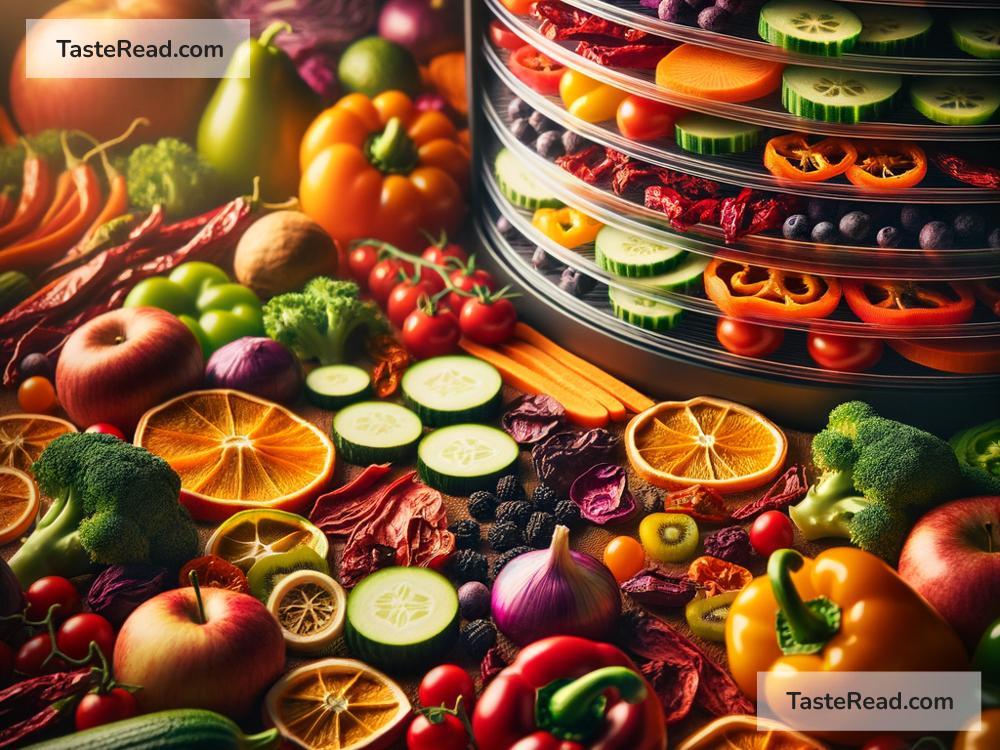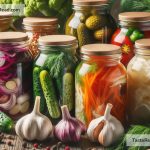Mastering the Art of Dehydrating for Flavor Concentration
If you’re looking to elevate your cooking game or just make some tasty snacks, mastering the art of dehydrating foods is a game-changer. Dehydrating, or drying out food by removing its water content, is not just about preserving food. It’s a fantastic way to concentrate flavors, making dishes and snacks more flavorful and enjoyable. Whether you’re a gourmet chef or simply a food enthusiast looking to explore, understanding how to dehydrate properly can open up a whole new world of culinary possibilities.
Why Dehydrate?
Dehydrating food does more than just extend its shelf life. Removing water concentrates the food’s flavor, making it more intense and vibrant. Imagine the difference in taste between a fresh tomato and a sun-dried tomato: the latter packs a more potent, sweet, and tangy punch, thanks to the concentration of flavors achieved through drying. This principle applies to a wide range of foods, from fruits and vegetables to meats and herbs.
Getting Started
The first step in your dehydration journey is to choose your method. You can dehydrate food in several ways: using a food dehydrator, an oven, or even the sun, if you live in a particularly hot and dry climate. Food dehydrators are the easiest and most efficient option, as they come with settings that allow you to control the temperature and airflow precisely. However, an oven can also work well, especially for occasional dehydrating.
Choosing the Right Foods
While you can dehydrate almost any food, some work better than others. Fruits like apples, bananas, strawberries, and pineapples turn into delicious, sweet snacks when dehydrated. Vegetables like tomatoes, peppers, and mushrooms become flavor-packed ingredients for soups, stews, and sauces. Meats can be turned into jerky, a tasty, high-protein snack. Herbs can also be dehydrated for use in cooking, making your homemade dishes even more special.
Preparation is Key
Proper preparation ensures your dehydrated foods taste fantastic. Here are some tips:
- Wash and Dry: Start by thoroughly washing your fruits and vegetables. Dry them to remove excess moisture.
- Slice Thinly and Evenly: Thin, even slices ensure your food dries uniformly. This is particularly important for fruits and vegetables.
- Blanching: Some vegetables, like carrots or potatoes, benefit from blanching before drying. Briefly boiling them helps lock in color, flavor, and nutrients.
- Marinating: For meats, marinating before dehydrating can add an extra flavor boost. Use your favorite marinade recipes for delicious homemade jerky.
The Dehydration Process
Whether you’re using a dehydrator or an oven, the process is similar. Arrange your prepared foods on trays, ensuring pieces don’t overlap. If using an oven, set it to the lowest temperature (usually around 140°F or 60°C). The key is low and slow: dehydrating is a process that can’t be rushed without sacrificing quality.
The time it takes to dehydrate food varies. Thinly sliced apples might take 6-8 hours, while meats could take up to 24 hours, depending on thickness and moisture content. Periodically check on your food, and once it’s done, let it cool before storing.
Storing Dehydrated Foods
Proper storage is vital for maintaining the quality of your dehydrated foods. Keep them in airtight containers, away from direct sunlight and moisture. Most fruits and vegetables will last up to a year if stored correctly, while meats are best consumed within a few months.
Creative Uses for Dehydrated Foods
Dehydrated foods can be more than just snacks. Here are a few creative ways to use them:
- Powders: Grind dried tomatoes or mushrooms into fine powders to use as flavor-packed seasoning.
- Teas: Dehydrated fruits and herbs can make delicious and unique teas.
- Baking: Incorporate dried fruits into bread, muffins, or cookies for bursts of concentrated flavor.
Conclusion
Mastering the art of dehydrating for flavor concentration is a valuable skill for any food lover. Not only does it offer a way to preserve food and reduce waste, but it also provides an avenue for creativity in the kitchen. By following these tips and experimenting with different foods and preparation methods, you can unlock intense and unique flavors, making your dishes and snacks even more enjoyable.


